Connect With Us
Blog
Items filtered by date: March 2024
Flat Feet and Orthotics
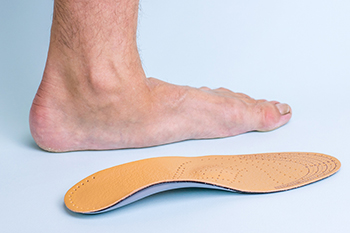
Flat feet, or pes planus, is a condition where the arches of the feet collapse, resulting in the entire sole of the foot being in contact with the ground. This can lead to various issues such as foot pain, arch strain, heel pain, and even knee, hip, and lower back problems due to altered biomechanics. Custom-made orthotics are often prescribed as a solution for flat feet. These orthotic devices are tailored to the individual's foot structure and biomechanics, providing support and alignment to address the underlying causes of flat feet. There are different types of orthotics available, including rigid orthotics that offer maximum support and control, semi-rigid orthotics that provide a balance between support and flexibility, and soft orthotics that offer cushioning and shock absorption. By correcting foot alignment and redistributing pressure, custom orthotics can alleviate symptoms associated with flat feet, improve foot function, and prevent or minimize the risk of further complications. If you have flat feet and they are interfering with your quality of life, it is suggested that you make an appointment with a podiatrist to see if orthotics can help provide correction and relief.
If you are having discomfort in your feet and would like to try orthotics, contact one of our podiatrists from Fox Valley Foot and Ankle Specialists. Our doctors can provide the care you need to keep you pain-free and on your feet.
What Are Orthotics?
Orthotics are inserts you can place into your shoes to help with a variety of foot problems such as flat feet or foot pain. Orthotics provide relief and comfort for minor foot and heel pain but can’t correct serious biomechanical problems in your feet.
Over-the-Counter Inserts
Orthotics come in a wide variety of over-the-counter inserts that are used to treat foot pain, heel pain, and minor problems. For example, arch supports can be inserted into your shoes to help correct overarched or flat feet, while gel insoles are often used because they provide comfort and relief from foot and heel pain by alleviating pressure.
Prescription Orthotics
If over-the-counter inserts don’t work for you or if you have a more severe foot concern, it is possible to have your podiatrist prescribe custom orthotics. These high-quality inserts are designed to treat problems such as abnormal motion, plantar fasciitis, and severe forms of heel pain. They can even be used to help patients suffering from diabetes by treating foot ulcers and painful calluses and are usually molded to your feet individually, which allows them to provide full support and comfort.
If you are experiencing minor to severe foot or heel pain, it’s recommended to speak with your podiatrist about the possibilities of using orthotics. A podiatrist can determine which type of orthotic is right for you and allow you to take the first steps towards being pain-free.
If you have any questions please contact our office located in Naperville, IL . We offer the newest diagnostic and treatment technologies for all your foot and ankle needs.
Gout Pain Can Be Managed
Custom Orthotics For Foot and Heel Pain

Step into relief and reclaim your mobility! Foot and heel pain can be a thing of the past with the right Custom Orthotics. Customized to your unique foot structure, they provide the support and alignment needed to alleviate discomfort. Whether you're walking, running, or simply standing, Custom Orthotics ensure every step is cushioned and pain-free. Don't let foot ailments dictate your day. With Custom Orthotics, embrace a world of comfort and freedom. Call today to schedule an appointment.
What Is Tarsal Tunnel Syndrome?
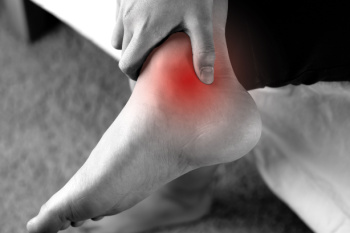 Tarsal tunnel syndrome is a compressive neuropathy condition that results from the entrapment of the posterior tibial nerve as it passes through the tarsal tunnel, a narrow passageway located on the inner side of the ankle. This entrapment leads to many symptoms, most notably pain, tingling, and burning in the foot and heel, which sometimes extends into the toes and lower leg. Many things can cause tarsal tunnel syndrome, such as injuries to the ankle, swelling from other health problems like diabetes, or just by repeating the same movements that irritate the area. Treatment strategies are tailored to the severity and underlying cause of the syndrome. Conservative measures include anti-inflammatory medications and orthotic devices to alleviate pressure on the nerve. More invasive options include surgical decompression to relieve the nerve entrapment. Tarsal tunnel syndrome can be hard to diagnose because its symptoms overlap with other nerve-related conditions. Podiatrists, or foot doctors, can do comprehensive evaluations to properly diagnose tarsal tunnel syndrome. If you have foot pain, or suspect tarsal tunnel syndrome, it is suggested that you seek treatment from a podiatrist who can properly diagnose this condition and offer a personalized treatment plan.
Tarsal tunnel syndrome is a compressive neuropathy condition that results from the entrapment of the posterior tibial nerve as it passes through the tarsal tunnel, a narrow passageway located on the inner side of the ankle. This entrapment leads to many symptoms, most notably pain, tingling, and burning in the foot and heel, which sometimes extends into the toes and lower leg. Many things can cause tarsal tunnel syndrome, such as injuries to the ankle, swelling from other health problems like diabetes, or just by repeating the same movements that irritate the area. Treatment strategies are tailored to the severity and underlying cause of the syndrome. Conservative measures include anti-inflammatory medications and orthotic devices to alleviate pressure on the nerve. More invasive options include surgical decompression to relieve the nerve entrapment. Tarsal tunnel syndrome can be hard to diagnose because its symptoms overlap with other nerve-related conditions. Podiatrists, or foot doctors, can do comprehensive evaluations to properly diagnose tarsal tunnel syndrome. If you have foot pain, or suspect tarsal tunnel syndrome, it is suggested that you seek treatment from a podiatrist who can properly diagnose this condition and offer a personalized treatment plan.
Tarsal tunnel syndrome can be very uncomfortable to live with. If you are experiencing tarsal tunnel syndrome, contact one of our podiatrists of Fox Valley Foot and Ankle Specialists. Our doctors can provide the care you need to keep you pain-free and on your feet.
Tarsal Tunnel Syndrome
Tarsal tunnel syndrome, which can also be called tibial nerve dysfunction, is an uncommon condition of misfiring peripheral nerves in the foot. The tibial nerve is the peripheral nerve in the leg responsible for sensation and movement of the foot and calf muscles. In tarsal tunnel syndrome, the tibial nerve is damaged, causing problems with movement and feeling in the foot of the affected leg.
Common Cause of Tarsal Tunnel Syndrome
- Involves pressure or an injury, direct pressure on the tibial nerve for an extended period of time, sometimes caused by other body structures close by or near the knee.
- Diseases that damage nerves, including diabetes, may cause tarsal tunnel syndrome.
- At times, tarsal tunnel syndrome can appear without an obvious cause in some cases.
The Effects of Tarsal Tunnel Syndrome
- Different sensations, an afflicted person may experience pain, tingling, burning or other unusual sensations in the foot of the affected leg.
- The foot muscles, toes and ankle become weaker, and curling your toes or flexing your foot can become difficult.
- If condition worsens, infections and ulcers may develop on the foot that is experiencing the syndrome.
A physical exam of the leg can help identify the presence of tarsal tunnel syndrome. Medical tests, such as a nerve biopsy, are also used to diagnose the condition. Patients may receive physical therapy and prescriptive medication. In extreme cases, some may require surgery.
If you have any questions please feel free to contact our office located in Naperville, IL . We offer the newest diagnostic and treatment technologies for all your foot and ankle needs.
How Shoes and Orthotics Impact Walking
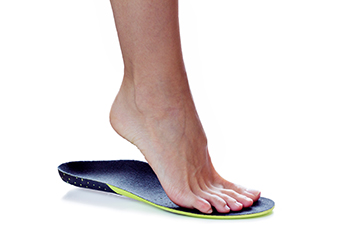
Wearing shoes can make it hard to study how your feet move while walking. But researchers found that if they looked at how the shin bone turns while walking, it relates to your heel's movement. Shoes and orthotics also affect shin bone rotation, both reducing how much the shin bone turns inside, compared to walking without them. Some special insoles slow down the shin bone movement, while hard insoles make the shin bone move more and faster. Patients can benefit from this research by making informed choices about the type of shoes they wear, as footwear plays a vital role in how the shin bone and heel interact during walking. Moreover, orthotic devices are commonly used to address various foot problems, and patients should be aware that the choice of orthotics can influence how their shin bone rotates while walking. Customized orthotic solutions, tailored to meet individual needs, can ensure optimal support and alignment. It is suggested that patients seek professional advice from a podiatrist to assess gait, foot mechanics, and specific requirements for shoes and orthotic devices, ultimately promoting better foot health and mobility.
The benefits of custom orthotics are far-reaching and can make a significant impact on your daily life. Whether you are an athlete looking to enhance your performance, a healthcare worker on your feet every day, someone who experiences chronic foot pain, or someone who wants to improve their overall comfort and well-being, custom orthotics can be a game changer.
Custom orthotics provide support, stability, and relief for a variety of foot conditions ranging from flat feet to heel pain. They can even help prevent injuries and address more severe foot concerns, such as plantar fasciitis and diabetic foot issues.
Contact one of our podiatrists at Fox Valley Foot and Ankle Specialists to create tailored orthotics for you and enjoy a higher quality of life, reduced pain, and increased mobility. With the right orthotics, you can continue doing the things you love, whether it’s running, dancing, or simply walking comfortably without discomfort.
If you are suffering from foot discomfort or have concerns about your foot health, do not hesitate to contact one of our podiatrists at Fox Valley Foot and Ankle Specialists to explore the benefits of orthotics for you. Your feet are the foundation of your body and investing in their well-being can lead to a happier, healthier, and more active lifestyle. Your feet will thank you!
If you have any questions please contact our office located in Naperville, IL . We offer the newest diagnostic and treatment technologies for all your foot and ankle needs.
How Podiatrists Treat Bunions
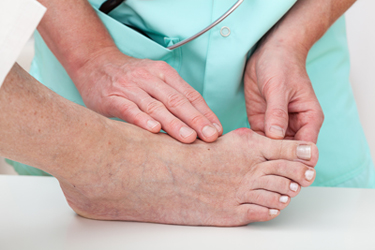 Podiatrists, or foot doctors, can take different approaches to treating bunions, which are structural deformities of the joint at the base of the big toe. This condition not only can cause pain but may also lead to a cascade of secondary foot problems, affecting mobility and quality of life. Initial treatment strategies may include non-invasive interventions aimed at alleviating symptoms and halting the progression of the deformity. Possible strategies include the use of custom orthotics designed to redistribute pressure away from the affected joint, targeted exercises to maintain joint mobility, and advice on appropriate footwear that accommodates the bunion without exacerbating discomfort. In more severe cases, podiatrists may recommend surgical intervention. This surgery, known as a bunionectomy, involves realigning the toe by correcting the abnormal angle of the bones, addressing the issue both cosmetically and functionally. If you have a bunion, it is suggested that you seek the care of a podiatrist who can recommend treatment options to prevent the condition from worsening.
Podiatrists, or foot doctors, can take different approaches to treating bunions, which are structural deformities of the joint at the base of the big toe. This condition not only can cause pain but may also lead to a cascade of secondary foot problems, affecting mobility and quality of life. Initial treatment strategies may include non-invasive interventions aimed at alleviating symptoms and halting the progression of the deformity. Possible strategies include the use of custom orthotics designed to redistribute pressure away from the affected joint, targeted exercises to maintain joint mobility, and advice on appropriate footwear that accommodates the bunion without exacerbating discomfort. In more severe cases, podiatrists may recommend surgical intervention. This surgery, known as a bunionectomy, involves realigning the toe by correcting the abnormal angle of the bones, addressing the issue both cosmetically and functionally. If you have a bunion, it is suggested that you seek the care of a podiatrist who can recommend treatment options to prevent the condition from worsening.
If you are suffering from bunion pain, contact one of our podiatrists of Fox Valley Foot and Ankle Specialists. Our doctors can provide the care you need to keep you pain-free and on your feet.
What Is a Bunion?
Bunions are painful bony bumps that usually develop on the inside of the foot at the joint of the big toe. As the deformity increases over time, it may become painful to walk and wear shoes. Women are more likely to exacerbate existing bunions since they often wear tight, narrow shoes that shift their toes together. Bunion pain can be relieved by wearing wider shoes with enough room for the toes.
Causes
- Genetics – some people inherit feet that are more prone to bunion development
- Inflammatory Conditions - rheumatoid arthritis and polio may cause bunion development
Symptoms
- Redness and inflammation
- Pain and tenderness
- Callus or corns on the bump
- Restricted motion in the big toe
In order to diagnose your bunion, your podiatrist may ask about your medical history, symptoms, and general health. Your doctor might also order an x-ray to take a closer look at your feet. Nonsurgical treatment options include orthotics, padding, icing, changes in footwear, and medication. If nonsurgical treatments don’t alleviate your bunion pain, surgery may be necessary.
If you have any questions, please feel free to contact our office located in Naperville, IL . We offer the newest diagnostic and treatment technologies for all your foot care needs.
Managing Plantar Warts
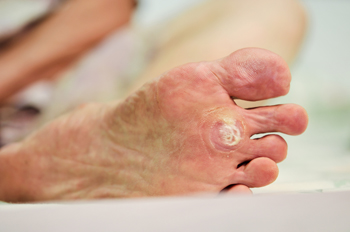
Papillomas, also known as warts, are caused by coming into contact with the human papilloma virus, or HPV. One type of papilloma found on the feet is termed a plantar wart. The HPV virus is commonly picked up in humid communal environments, such as public showers and swimming pools. The best way to avoid being exposed to these contagious papillomas on your feet is to wear appropriate foot coverings in public places such as showers, locker rooms, and pools. A plantar wart typically appears as a small, rough growth on the bottom of your foot, usually at the base of the toes, or on the ball or heel. In some cases, the wart may contain black pinpoints, which are small clotted blood vessels, commonly called wart seeds. While a plantar wart may resolve without treatment, seeking advice from a podiatrist can help to minimize its spread and any discomfort it causes. If the wart reoccurs, and especially if it is bleeding, painful, or there are changes in shape or color, it is suggested that you schedule an appointment with a podiatrist for immediate treatment.
Plantar warts can be very uncomfortable. If you need your feet checked, contact one of our podiatrists from Fox Valley Foot and Ankle Specialists. Our doctors will assist you with all of your foot and ankle needs.
About Plantar Warts
Plantar warts are the result of HPV, or human papillomavirus, getting into open wounds on the feet. They are mostly found on the heels or balls of the feet.
While plantar warts are generally harmless, those experiencing excessive pain or those suffering from diabetes or a compromised immune system require immediate medical care. Plantar warts are easily diagnosed, usually through scraping off a bit of rough skin or by getting a biopsy.
Symptoms
- Lesions on the bottom of your feet, usually rough and grainy
- Hard or thick callused spots
- Wart seeds, which are small clotted blood vessels that look like little black spots
- Pain, discomfort, or tenderness of your feet when walking or standing
Treatment
- Freezing
- Electric tool removal
- Laser Treatment
- Topical Creams (prescription only)
- Over-the-counter medications
To help prevent developing plantar warts, avoid walking barefoot over abrasive surfaces that can cause cuts or wounds for HPV to get into. Avoiding direct contact with other warts, as well as not picking or rubbing existing warts, can help prevent the further spread of plantar warts. However, if you think you have developed plantar warts, speak to your podiatrist. He or she can diagnose the warts on your feet and recommend the appropriate treatment options.
If you have any questions please feel free to contact our office located in Naperville, IL . We offer the newest diagnostic and treatment technologies for all your foot and ankle needs.
